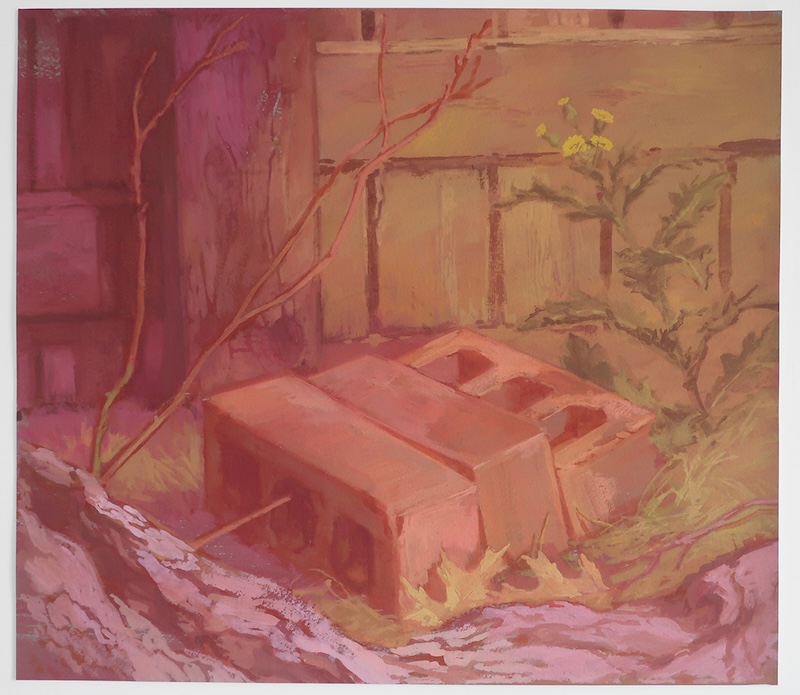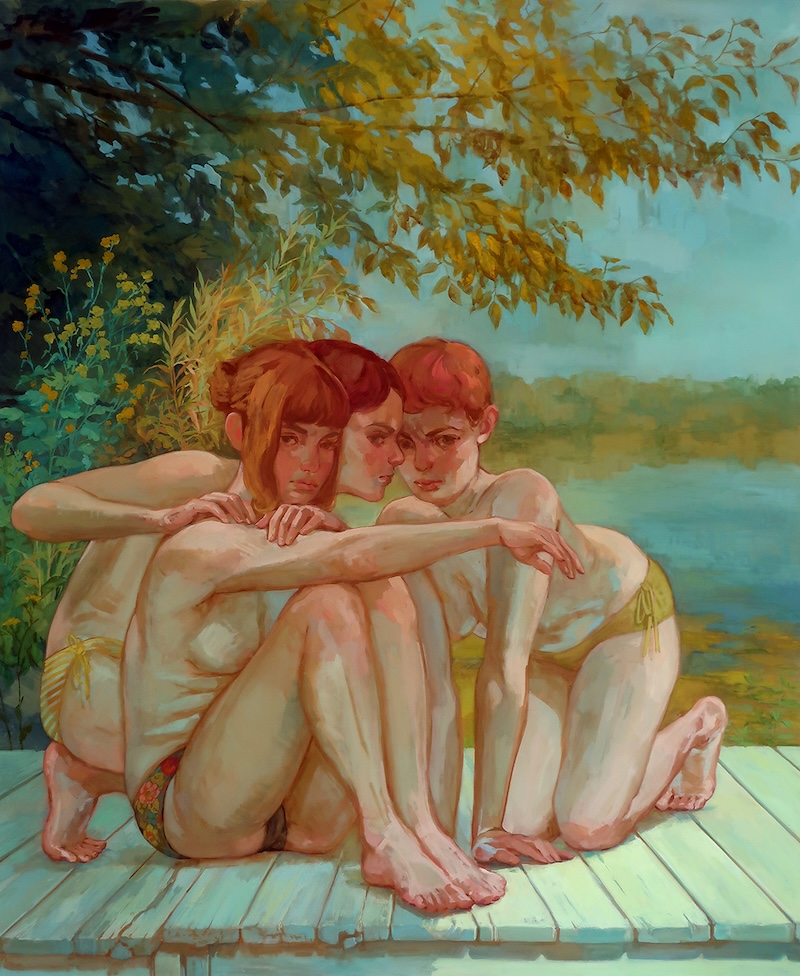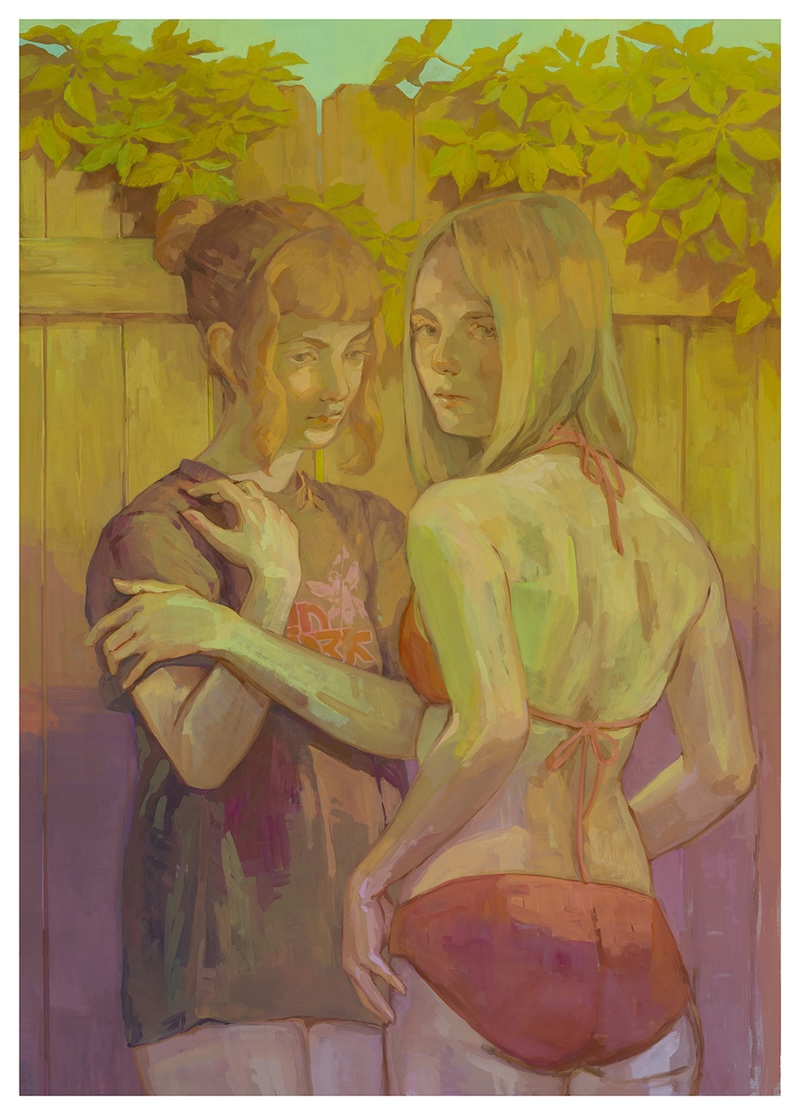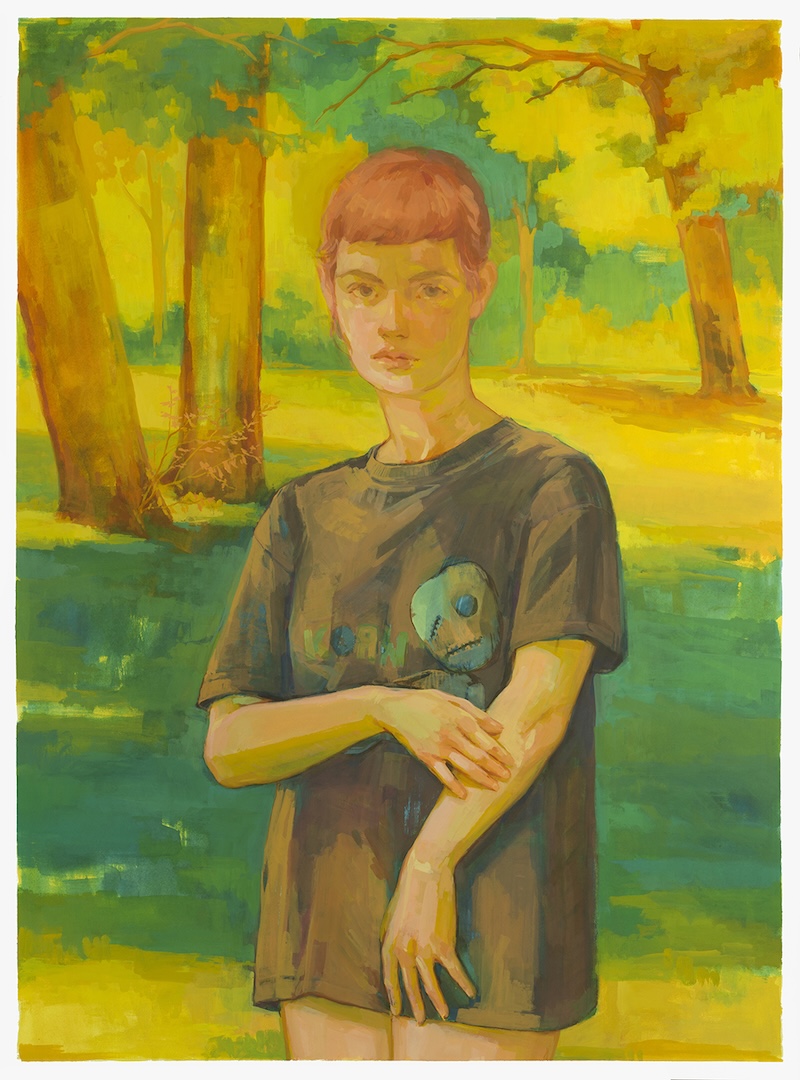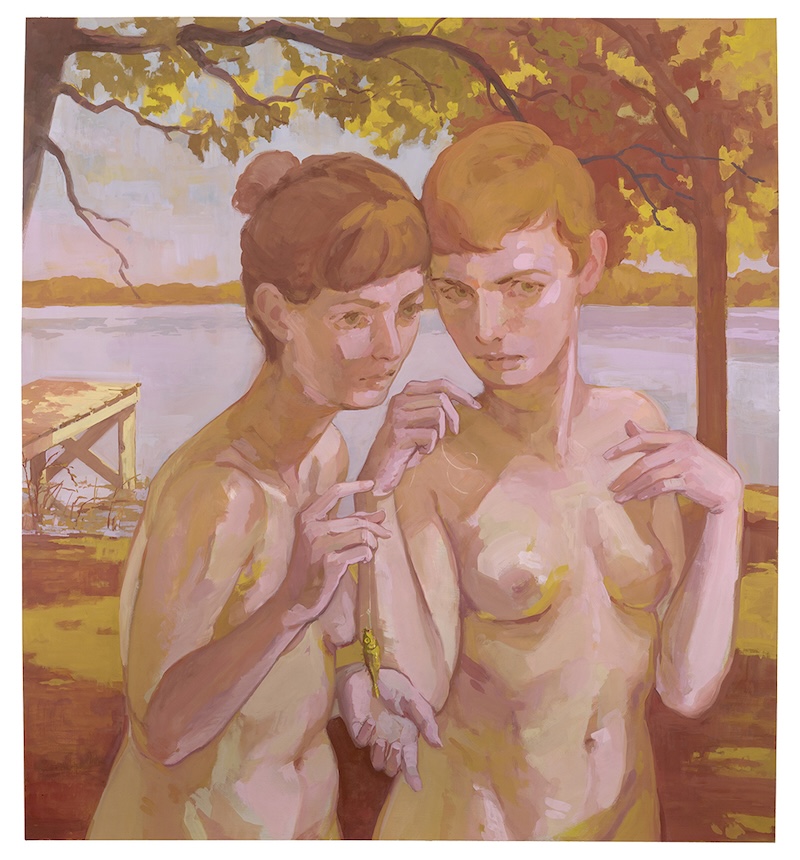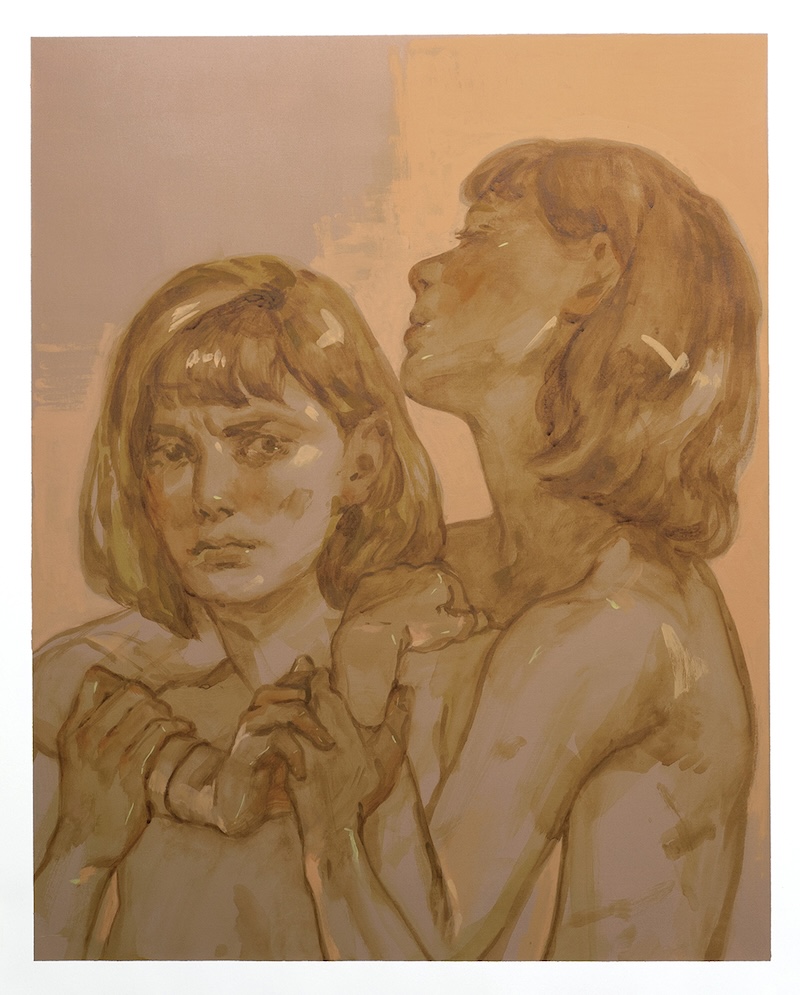The rules of adolescent girlhood are convoluted and often unspoken, something painter Rachel Gregor seeks to highlight in her first solo exhibition with Hashimoto Contemporary, Still Summer. The Kansas City-based painter portrays the summer before ninth grade (remembered through overexposed point-and-shoot film photos) as the tense passage into true young adulthood: newfound independence is at odds with a lack of agency, infantilization discredits budding knowledge about the world. Based on versions of herself, the characters in these new paintings are wolves in sheep’s clothing, rebelling to escape their physical and psychological barriers, or at least survive the small hell of Arcadian juvenility.
Casting her female figures out on their own or clustering them uncomfortably close, Gregor creates each composition through an amalgam of tense gestures and wide-eyed glances, locating repressed memories of teenage girlhood somewhere between the mundane and the melodramatic. These relationships are not the vapid or frivolous situations patriarchal society frames them as, but deeply emotional, contradictory, and fulfilling connections that transform lifetimes. Converging the theatrical figure positioning of Rococo painter Giambattista Tiepolo with the warped narrative sensibilities of the Brönte sisters, these works depict summer as an inescapable purgatory with no respite beyond the fences, fields, or trees that encircle the figures. These girls seem to conspire against something beyond the frame, pulling the viewer into the compositions’ confines so they might escape or, at the very least, commiserate.
The exhibition features several sub-series of works hinting at Gregor’s autobiography, including a diptych of “poser” girls wearing t-shirts by Nu Metal bands, a genre of hardcore music popular in the mid-1990s and dominated by young angry white men. “I was very drawn to it,” Gregor writes, “there was comfort in anger.” The image of a small American midwestern girl in an aggressive band’s shirt felt pitiful but compelling, “like a small animal backed into a corner, afraid it will have to attack.” Whether nude and nymph-like or clothed and self-conscious, each girl represents a threat dismissed to provide a false sense of security, wicked misguidance wrapped in supple flesh, and an assumption of frailty. When you’re 13, summer is not marked by moments of euphoria but by miserable perseverance. Despite their rage, it is still summer.



